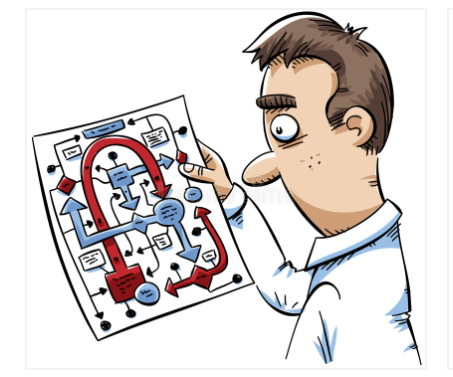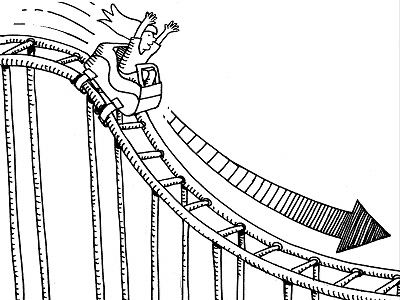
1/25: It was amazing to see the reaction to the thread by @dunkhippo33 about “why ownership doesn’t matter for early stage investing”. There are great nuggets in her thread but I have a very different perspective and counter-argument.
The case for why ownership DOES matter:
The case for why ownership DOES matter:

2/25: The main argument that @dunkhippo33 makes is that “multiples on invested capital” is all that matters. While this is a truism, the argument glosses over fund dynamics and how much easier it is to produce great fund returns with a concentrated vs dispersed portfolio.
3/25: Let’s start with the typical distribution of outcomes in an early stage fund. Most investments in the fund end up doing “OK” or they completely flame out. The bottom 75-90% of the investments will end up collectively returning 0.5-1.0X to the fund.
4/25: This means that 10-25% of the companies need to return 2-3X for the fund to be considered top quartile. If the fund invested equal sized checks into the companies and doesn’t write follow-on checks in future rounds the best companies have a lot of work to do!
5/25: For 25% of the capital to return 3X the total fund’s invested capital, the top 25% of companies need to return on average 12X. With future dilution considered, this means enterprise values will need to increase by 25-50X to hit this figure.
6/25: For 10% of the capital to return 3X the total fund’s invested capital, the top 10% of companies need to return on average 30X. With future dilution considered, this means enterprise values will need to increase by 62-125X to hit this figure.
7/25: The math works if you’re a great whale hunter with access to amazing deal flow at incredibly low prices, but the bar is REALLY high. As an early stage investor, finding multi-billion dollar outcomes repeatably fund after fund after fund is an achievable but Herculean task.
8/25: The difficulty of dive is reduced when a fund can concentrate more money in its winning companies. This is usually accomplished by exercising pro-rata rights and writing follow-on checks in a fund's best companies.
9/25: The truth is that the 2nd and 3rd checks written into a company are almost always better than the initial check from a risk/return standpoint. The returns on these checks will almost always be greater than the target fund return and the certainty in these checks is greater!
10/25: Example: A top 10% investment might have a first check return of 50X. It’s pretty typical for the 2nd check to have a return of 20X and the 3rd check to have a return of 10X. A 4th check might even have a return of 5X and a 5th check 3X.
11/25: If you treat these follow-on investments as alternatives for a new TBD 1st check investment, all 5 would have a greater expected value than a new investment and with much greater certainty.
12/25: Assuming a fund decides to invest in the 2nd and 3rd rounds and their pro-rata gives them rights to invest 50% of their initial check size into each round, the pro-rata checks are equivalent to finding another 15X investment opportunity for the fund!
13/25: By getting 50% of a fund’s dollars into the best 25% of its investments, the math completely changes. These companies need to deliver a 6X return on average to deliver a 3X aggregate return to the fund. This is much more repeatable AND with greater certainty.
14/25: But why are these investments more certain? Information! So why does ownership matter? Because NOT EVERYONE GETS ACCESS TO THIS INFORMATION. Apologies for the twitter scream but this concept is lost on many smaller check investors.
15/25: The truth: Follow-on investors have more information that first check investors have. Active investors have more information than passive investors have. And active investors with Board seats have the most information.
16/25: Think of underwriting an initial investment as a photograph. You spend concentrated time with a company to create a snapshot of where the company is and an idea about where it’s headed in the future. But it’s a snapshot based on the “here and now”.
17/25: The benefit to being an active investor is that you get to watch a video unfold over time as the company learns and grows. You might even get to be a participant in the video from time to time if you’re helping them make critical decisions.
18/25: So when it comes time to write a follow-on check, an active investor can base his/her decision on a massive amount of raw data and numerous experiences with the company. They don’t have to interpret a curated deck or try to power through a data room to draw conclusions.
19/25: Being part of the story generates insights. An active investor understands a company’s strengths and weaknesses. They understand its market better than they did before writing their first check. They can frame “how high is up” with much more precision.
20/25: All this information weighs into follow-on investment decisions and my experience (based on QED’s portfolio of 130+ investments over 13 years) has taught me that the best risk/return trade-offs are in writing the 2nd and 3rd checks into your best companies.
21/25: And using this lens, OWNERSHIP MATTERS IF IT ALLOWS YOU TO PLAY A MORE ACTIVE ROLE. Board seats are typically reserved for lead checks. Frequent interaction typically only happens between a company and its major investors. This is just how things work.
22/25: To compound the issue, the real world makes follow-ons very challenging for small investors. Usually a lead emerges and the small investors are asked to make a decision about their pro-rata. They get very little additional information and have to act quickly.
23/25: And in many cases, there isn’t enough room in the round for pro-rata to even be honored. In today’s environment, all top-tier VCs are fighting for ownership and it VERY frequently comes at the expense of the smaller investors (even if they have “rights”).
24/25: One counter-argument I’ve heard is that spreading a fund’s capital across more investments creates a better chance of finding a break-out winner. True. But winning this game requires volumes of massively positive selected deal flow that only a few angels command.
25/25: The TL;DR: My personal belief is that top tier returns are easier to generate and more repeatable if you’re an active investor with enough ownership to protect your rights. Small investors can win, but it’s MUCH more difficult.
• • •
Missing some Tweet in this thread? You can try to
force a refresh








